#she was inspired by women surrealist artists
Text
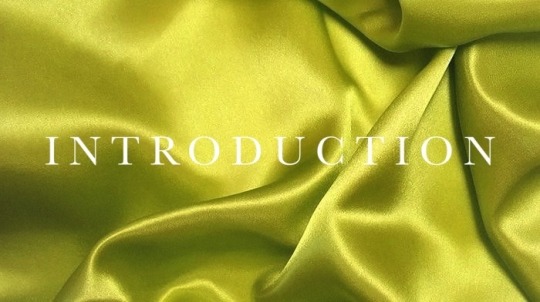
My First Writeblr- An Introduction
I’ve used tumblr on and off for over ten years but wanted a blank slate now in time for NaNoWriMo 2023 and all the future writing projects I’m devoting myself to. Also highly inspired by all the cool writing blogs I’ve discovered so far since restarting this account <3
About Me:
My name is Char or Charlotte (she/her), I’m 24 and live in the Pacific Northwest in the US
I write literary fiction now, but have kept up various personal essay projects and poetry over the years primarily through my private newsletter!
I have a Bachelor’s degree in English Language and Lit with a soft spot for the Gothic and Romantic eras.
Nothing published yet, but since I am finally out of school I am entering a new phase of creative freedom that feels very encouraging.
Fun extras: I’m a virgo sun, pisces moon (yes, it does hurt), my cat’s name is Brad, I am also a fiber artist, musician, home renovator, perfume enthusiast, and chronic illness advocate.
My WIPs:

Project Amgydala (tentative title: Ballad of a Blue Whale)
Novella- Literary Fiction/Surrealism
Status- Draft 1 complete at around 33,000 words
2024 Goal- First revision/draft 2
Synopsis- Maren Hara, a recent graduate, moves back in with her father and turns completely inward. She removes herself from the life she created throughout university and begins walking from sunset to sunrise, looking for something she cannot put her finger on. This leads her to Devereaux's Salvation, a jazz bar seemingly from another era, whose eager manager and illusive owner begin to crack through Maren's walls and bring her back into humanity.

Project Corvidae (tentative title: I Want to Build a Home with You)
Undetermined- Literary Fiction/Light Mystery/Horror
Status- Plotting and beginning first draft
2024 Goal- Complete outlines and give draft 1 my best shot
Synopsis- In the wake of the death of her family matriarch, portrait painter and former performance art prodigy Leonie Richards finds herself on the receiving end of her grandmothers vast literary legacy and her eclectic, spirit filled home. Alongside her uncle, the art store clerk, and a host of portrait clients she begins to unlock the secrets of the final years of her grandmother's life.

Mind Over Matter- this is actually backstory for Leonie from Project Corvidae and seeks to shed light on her past performance art pieces and the relationship between her and her grandmother. Light body horror, unsettling women, the works.
One of These Nights- a slice of life, Murakami-inspired piece of an American expat living in Tokyo trying to ground herself within a new language. Digs into themes of friendship and social anxiety. Lots of fun music cameos.
a green pea moon- my FAVORITE. My little baby. A surrealist romp through the dream world and how it relates to the joy and fear of being queer and letting yourself be loved. Near and dear to my heart.
taglist: @annlillyjose @coffeeandcalligraphy @subtlefires @belovedviolence @onomatopiya
#writer#nanowrimo#author#writerblr#creative writing#novel writing#nano 2023#lit fic#writers on tumblr
65 notes
·
View notes
Text
Martine Johanna's "How to Eliminate Stress and Anxiety through Good Housekeeping."
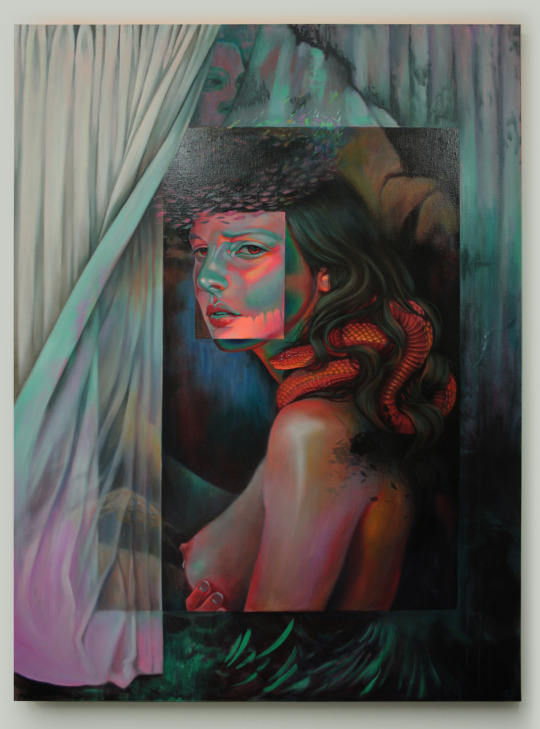
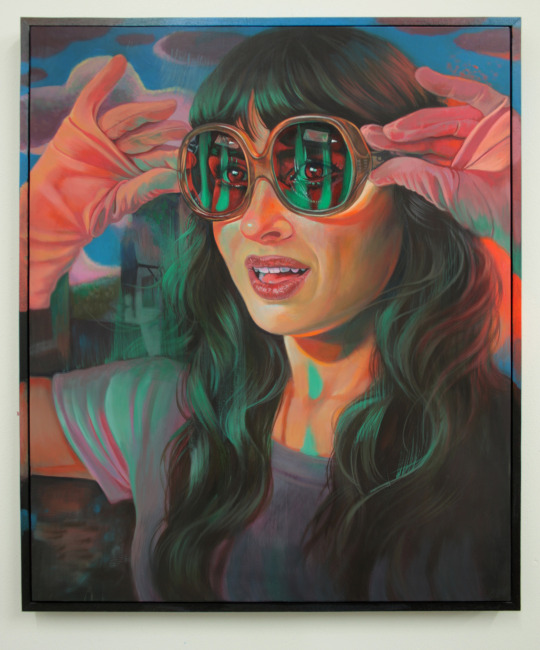
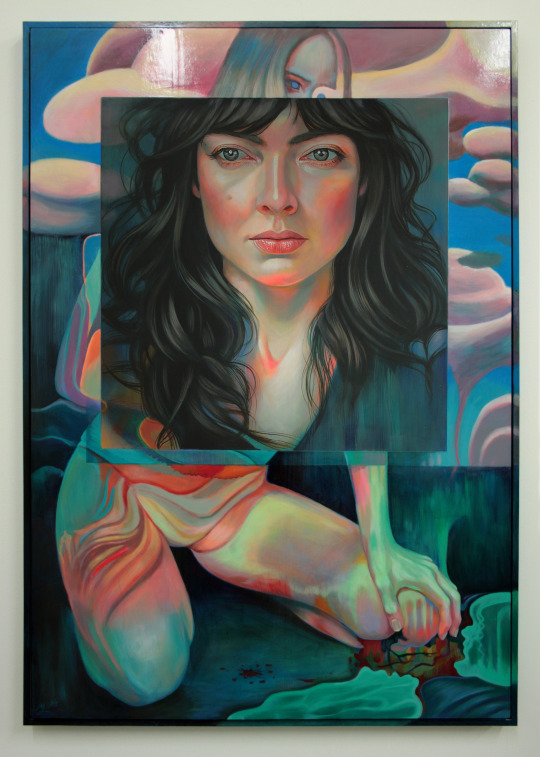
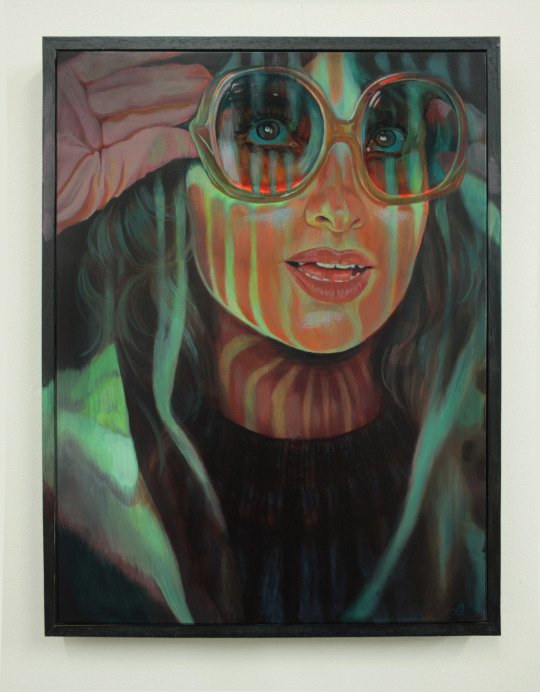

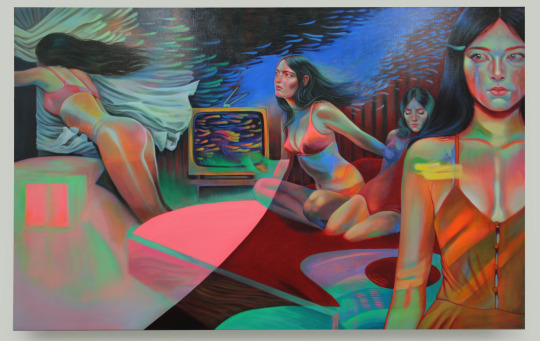

Currently on view at MasseyKlein Gallery in New York City is artist Martine Johanna's must see solo exhibition, "How to Eliminate Stress and Anxiety through Good Housekeeping."
This fascinating exhibition from Johanna delves into the relationship between public perception and private self-image, incorporating irony and light humor. Central to Johanna's work is the multifaceted role of women in Western society, with a focus on the female figure. Her semi-autobiographical paintings, straddling surrealist abstraction and intricate narratives, examine perceptions of gender, competition, beauty, personality, and attraction in both personal and art historical contexts. The vivid scenes highlight the stark contrast between reality and dreamlike escapism, prompting discussions about identity crises stemming from societal expectations and social media pressures.
Johanna's inspiration originates from her childhood, where she experienced a strict upbringing within traditional gender divides. Escapism was found in dime novels, TV programs, and fashion magazines, much like today's screens and social media channels. Her female protagonists playfully depict the struggle between youthful naivety and adulthood while trying to establish their identities. The artist draws inspiration from Titian's Venus with a Mirror, using modern and prismatic techniques to create visually stimulating compositions that leave the viewer to ponder and interpret the scenes. Adopting 1970s color schemes, technicolor television, and Fauvism, Johanna first paints a dark ground on linen or panel and layers the narrative with rich colors, brighter hues, and neon, resulting in elaborate, detailed, suggestive, and mesmerizing paintings.

THE SUPERSONIC ART SHOP | FOLLOW ON INSTAGRAM
53 notes
·
View notes
Text

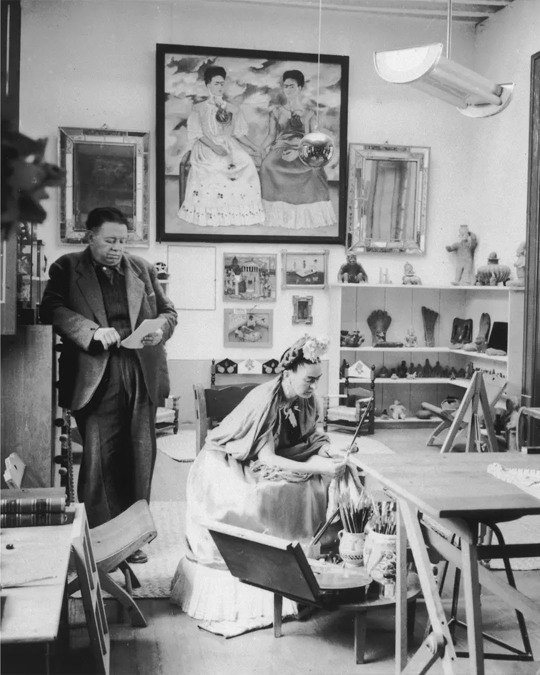
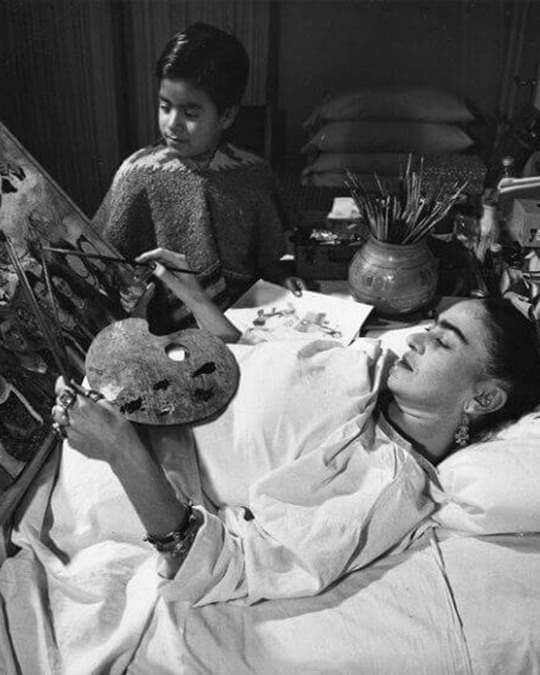

Frida Kahlo is arguably Mexico’s most famous artist. Inspired by the country's popular culture, she employed a naïve folk art style to explore questions of identity, postcolonialism, gender, class, and race in Mexican society.
Her paintings often had strong autobiographical elements and mixed realism with fantasy. In addition to belonging to the post-revolutionary Mexicayotl movement, which sought to define a Mexican identity outside of European colonialism, Kahlo has been described as a surrealist or magical realist.
Although she was disabled by polio as a child, Kahlo had been a promising student headed for medical school until a traffic accident at age eighteen, which caused her lifelong pain and medical problems. During her recovery, she returned to her childhood hobby of art with the idea of becoming an artist.
Kahlo's interests in politics and art led to her joining the Mexican Communist Party in 1927, through which she met fellow Mexican artist Diego Rivera.
Kahlo's work as an artist remained relatively unknown until the late 1970s, when her work was rediscovered by art historians and political activists. By the early 1990s, she had become not only a recognized figure in art history but also regarded as an icon for Chicanos, the feminism movement, and the LGBT movement.
She had a tumultuous relationship with her husband, Diego Rivera. Both had a number of affairs — some sanctioned and some on the sly. They even divorced for a year and then remarried. Her lovers included a diverse selection of men and women, many of them well-known thinkers and artists in their time. Over the years, she had affairs with Leon Trotsky, Josephine Baker, Chavela Vargas, Georgia O'Keeffe, and Isamu Noguchi.
22 notes
·
View notes
Text



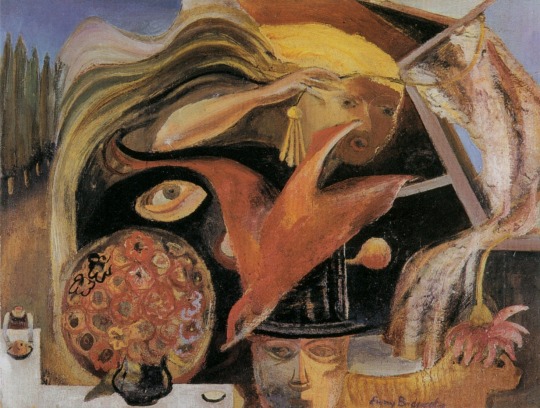
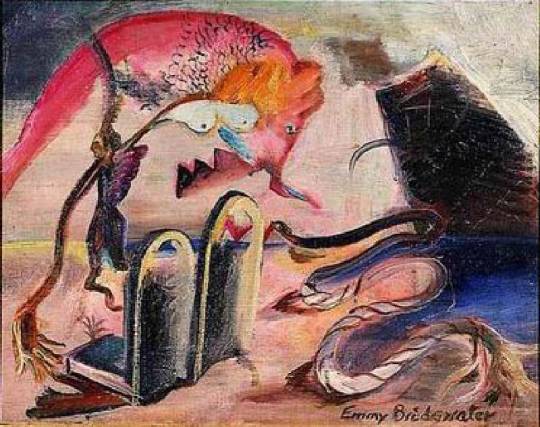


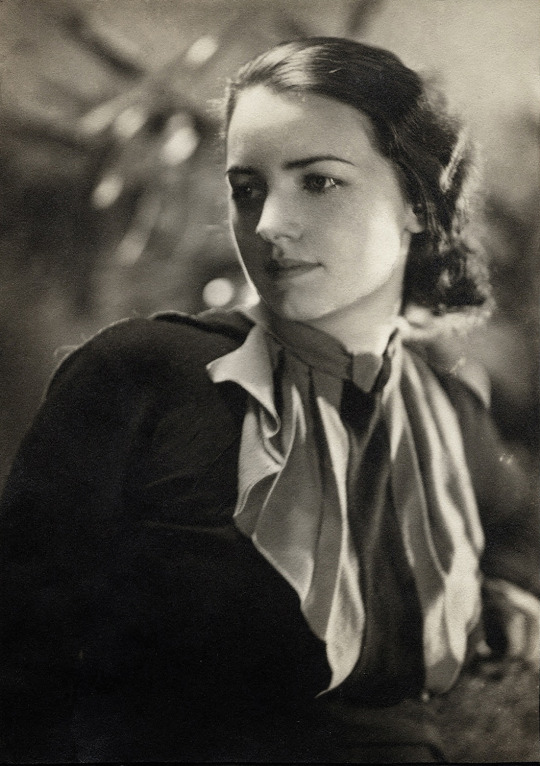
Emma Bridgwater (1906 – 1999), Britsh surrealist artist and poet.
Born in Birmingham, Emmy Bridgwater began her formal art education at the progressive Birmingham School of Art. Taught for three years by portrait artist Bernard Fleetwood-Walker (1893-1965), she became a skilled painter and draughtswoman. Attending the 1936 International Surrealist Exhibition in London, the artist was inspired to join this radical new movement. Here, she met fellow Birmingham artists Conroy Maddox and John Melville, and the writer Robert Melville.
She worked with them to establish the Birmingham Surrealist Group, which was later joined by Oscar Mellor (1921-2005) and Desmond Morris (1928). E. Bridgwater was a leading member of this ambitious circle of artists and writers, who met in the Kardomah Café, the Trocadero pub and at C. Maddox’s house. Throughout the 1930s and 40s, they acted as a collective, organising lectures and debates, to which they invited local academics and musicians.
11 notes
·
View notes
Text
BRIEF THREE- MOVEMENT
Painting- Week One
Artist research- Hima Af Klimt
Hilma af Klint was once known as a minor academic Swedish artist. Born in 1862, she had been one of the first women to graduate from the Royal Academy of Fine Arts in Stockholm and had exhibited at the Swedish General Art Association.


Thses paimtings are her early works from the academy, but her most recognized paintings are not in the traditional style of art that she was taught by traditional art teachers. Her most renowned paintings reveale another life, a different art. Her involvement with spiritualism had radicalised her art to such an extent, that she can only be described as one of the greatest abstract artists.

As we can see, this is quite a shift in style. But what caused this shift? Well, her belief system became more vast, as it did many for many around that time. The scientific discoveries of the late 19th and early 20th century encouraged many to question the very nature of the universe.
In the 17th century, Isaac Newton discovered light was made of particles. In the early 19th century, Goethe’s Theory of Colours led many to see colour had spiritual and psychological powers. In the early 20th century, Max Planck demonstrated light particles had energy.
Many began to think that, if the universe was more than it seemed, then perhaps there were other lives living on different astral planes. Perhaps it was possible for some to be mediums, opening themselves to communicate with spirit guides to these worlds.
At the end of the 19th century a new religion, Theosophy, appeared, incorporating both ancient wisdom and modern science.
It is not surprising af Klint should become a follower. What is surprising is the power of the art unleashed as a consequence.
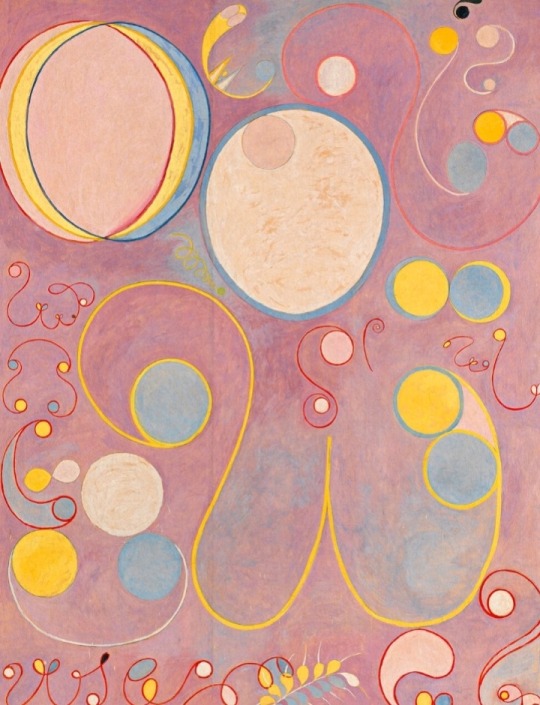
Af Klint was also influenced by another religious movement called spiritualism, which became popular in Europe and the United States during the mid- to late nineteenth century. Spiritualists believed in the existence of unseen spirits that could communicate with the living.
Af Klint began participating in séances in 1879, at the age of seventeen. The death of her sister one year later increased her interest in the practice. By the mid-1890s, she met regularly with a group of four other women who called themselves The Five.

The Five believed they could communicate with mystic beings named “High Masters.” In trance-like states, the women transcribed messages from these beings, who identified themselves as Amaliel, Ananda, Clemens, Esther, Georg, and Gregor. These automatic writings and drawings allowed af Klint to develop her own visual language and move away from her formal academic training and toward abstraction. She attributed her early revolutionary forays into abstraction to an external spirit and not her own conscious mind. The automatic techniques used by The Five were common among spiritualists during that time. Several decades later, the Surrealists would use techniques of psychic automatism, not to transmit the messages of spirits but to tap into their own subconscious thoughts.
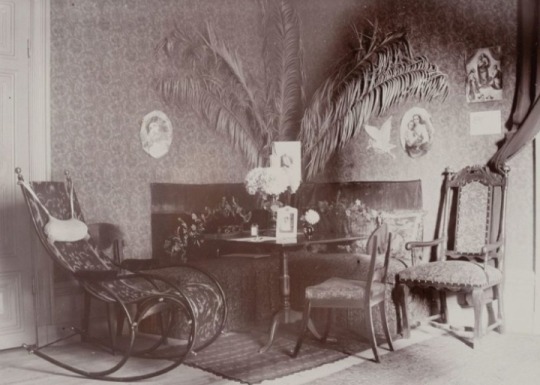
(Seance room of The Five)
She felt the abstract work and the meaning within were so groundbreaking that the world was not ready to see it, and she wished for the work to remain unseen for 20 years after her death.

I absolutley adore her abstract style. Its conveys the exact feeling I personay attribute to death and spirituality. Its an abstract expirience, not a physical one after all. I find Hima Af Klimts work very inspiring and will take inspiration from her work to apply within my own project.
5 notes
·
View notes
Text

Mae West (born August 17, 1893, Brooklyn, New York, U.S.—died November 22, 1980, Los Angeles, California) American stage and film actress, a sex symbol whose frank sensuality, languid postures, and blasé wisecracking became her trademarks. She usually portrayed women who accepted their lives of dubious virtue with flippant good humour.

West made her debut with a Brooklyn stock company about 1901, and by 1907 she had become a performer on the national vaudeville circuit in partnership with Frank Wallace. She made her Broadway debut as a singer and acrobatic dancer in the revue A la Broadway in 1911. For the next 15 years she alternated between vaudeville and Broadway shows, and she did an occasional nightclub act.

"When I'm good, I'm very good, but when I'm bad, I'm better."
In 1926 West began to write, produce, and star in her own plays on Broadway. In the first of these, Sex (1926), her performance as a prostitute created a sensation but also earned her an eight-day jail sentence for “corrupting the morals of youth,” from which she emerged a national figure.
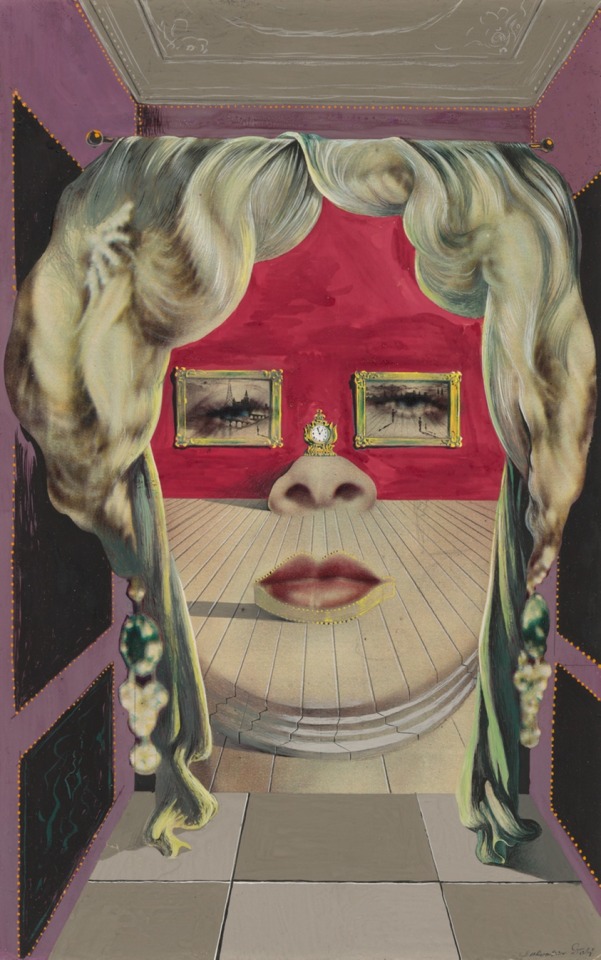
ABOVE: Surrealist artist Salvador Dalí believed that the feminine model of beauty was the depiction 1920s Hollywood film star and sex symbol, Mae West. In 1934, Dalí imbued his paranoiac artistic method to create a work using a newspaper photo of Mae West, in which he transformed her face into an apartment. In this realistic scene, West’s facial features become furniture and ornamental motives, creating a surrealist depiction of a room. Years later, Dalí used this collage as inspiration for the artist’s Mae West room, further developing the concept with Catalan architect and designer Òscar Tusquets.
3 notes
·
View notes
Text

The broken column is an oil painting done by Mexican artist Frida Kahlo. Kahlo created this painting in 1944 shortly after she had correctional spinal surgery. Kahlo had a life altering accident in which a streetcar ran her over in 1925 which caused her great pain for her remaining years. This would become the topic for most of her art further down the line. Kahlo has always been an inspiration to many female Mexican artists as she broke the boundaries of what was considered appropriate. I chose this image because it was the first painting that has ever made me stop and think about it. I grew up with a copy of this painting hung in my basement and I remember thinking that it was calling out to me when I was a kid. Despite the graphic image it never scared me. I was only ever intrigued. This painting inspired me to research more about Kahlo and her life and I now consider her a great inspiration. It is the most influential art piece in my life
For this art piece Frida Kahlo uses the elements of visual art to better express her sentiments. Kahlo uses the space behind her to accentuate her body in the work. The sky behind her is an example of negative space. This helps to underline the body as the positive space. She also uses dull colors for the landscape to ensure that she is the focus. Kahlo uses perspective and emphasis to draw focus to the body. The body is much larger in proportion compared to the landscape behind her. There is also a sense that she is 3 dimensional and appears to be popping out of the canvas. This gives further emphasis on the body. The nails in her face and body also appear to be 3 dimensional to further draw our eyes to the focus of the art. Kahlo uses line to direct our eyes on the center focus. The lines in the background are all horizontal and pointing towards the body. The main line is the column that is running through her core. It is the only line running vertically which is a good contrast with the other lines to help the body stand out. There is a lot of variety in her piece between all the shapes, colors, and lines. All these elements help her accentuate what she deems important in her work. In this case the replication of her body.
The theme of suffering permeates most of Kahlo’s self-portraits. Kahlo painted the broken column shortly after her spinal surgery. She depicts herself bound by nails, cloth, a metal column, and a brace. The metal column was painted in place of her spine. This expresses how she felt confined by the limits of her injury. Despite the tears we see running down her face she is expressionless. Her calm composure could represent how defeated she was by the pain. It consumed her. She paints herself to render her physical and psychological pain visible through the distortion of her body. Frida did this not only to alleviate her pain through her art but to give so many other women an outlet for their troubles. The emotional intensity of her work, such as this one, is what led many to label her as a surrealist. However, Frida always denied the title as she said she was not painting dreams she was painting her own reality.
3 notes
·
View notes
Text
Evelyne Axell
Evelyne Axell was a Belgian pop artist known for her politically charged erotic paintings that transcended the boundaries of what was her socio-political reality.
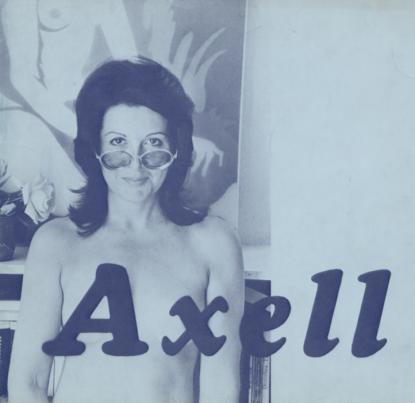
Born in the 30s and lived through the 60s
She studied pottery after high school then switched to drama, initially beginning a career as an actress. She married Jean Antoine, a film director who specialized in art documentaries for Belgian television…. Now, Axell was not her given name… her given name was Devaux. (father Andre Devaux)... She changed her name to Axell for acting career purposes. She worked as an interviewer in a documentary about avant garde artists, a television announcer, performed in a variety of theatrical and televised plays, and starred in several movies, one being the provocative Le Crocidile en peluche that she wrote herself.
Side note: she had a baby somewhere in between all of this. I have to make note of that because it’s a reminder of how magnificent women are…
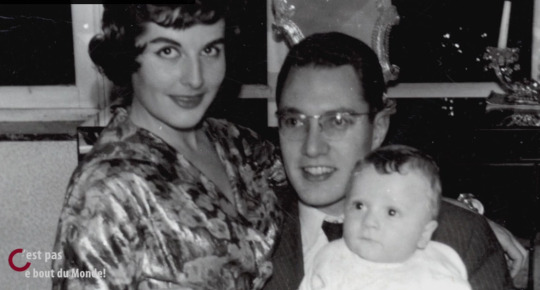
carrying on…
After some time she then quit her career as an actress and went on to pursue painting.
Not trying to be an encourage-er of quiters… but lets normalize this. Lets normalize changing directions when you are no longer fulfilled or satisfied with what you’re doing.
I’m assuming Evelyne had a strong desire to create, whatever it was she was supposed to be creating was a journey within itself she was trying to figure out… or maybe it was just about exploring… leaving no stone unturned.

So, apparently surrealist painter Rene Magritte, was a friend of her husband’s, and she was able to gain him as a mentor. They visited with each other 2 times a month over the course of a year and worked on developing and improving her oil painting technique.
Evelyne and her husband travelled a lot for work. On one of these trips she went to London with Antoine while he was putting together a production to spotlight pop artists. She met a few of these artists in their studios and became so influenced and enamored that she started to form her own style of Pop art, being one of the first Belgian artists to explore this style of painting.

She faced difficulties getting her paintings shown in galleries and in hopes of being taken more seriously as a female artist, she began using the androgenous name Axell professionally.
Like just Axell.. Period. And signing her paintings as Axell.
Her work is an intoxicating mix of art historical- and self-reference, formal originality, and a playful sense of political awareness. She was a protofeminist who was aware of the discrimination of women at that time and was mocking about certain things.

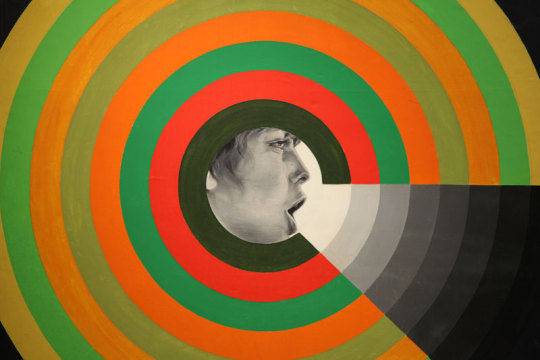
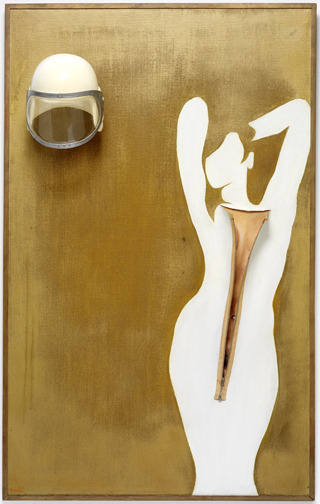
Her signature was the spherical blue glasses that she wore and often showed up in her artworks. She merged herself with a number of figures she depicted.

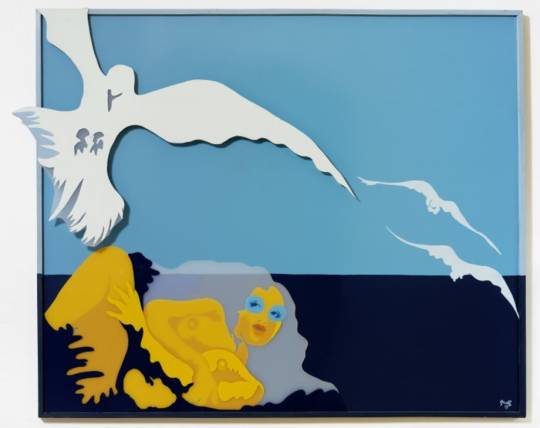
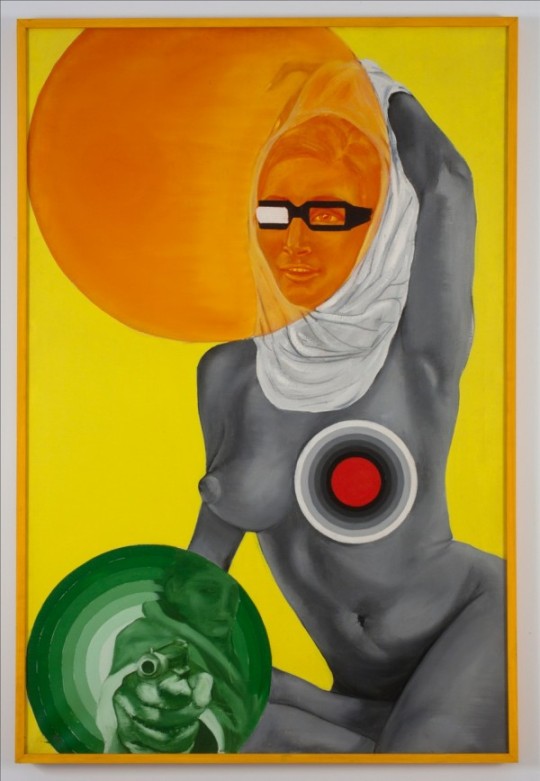
Her artwork speaks about the body and sensuality, about social limitations, taboos and their transgression in ways that invite the viewer to think outside the traditional borders of their social, political, or religious context. Axell's work is not just pioneering feminist art; it's the "outstanding quality" of it: her striking use of fresh, contemporary colors; her notable application of unusual materials, her surprising use of jutting layers to build highly original works that evade clear definition; and lastly, her refusal to be pinned in by art movements, be it pop or nouveau réalism, or even the surrealism of her one-time teacher Magritte, whose influence is apparent in her early work.
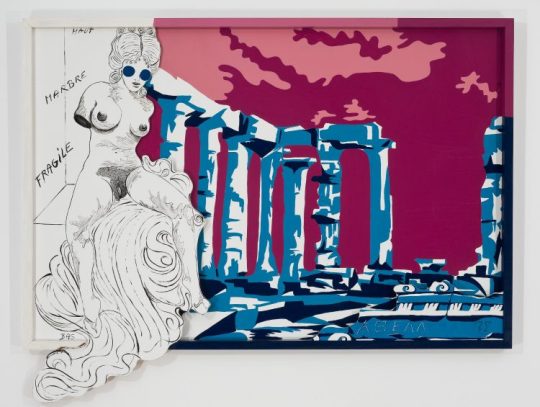

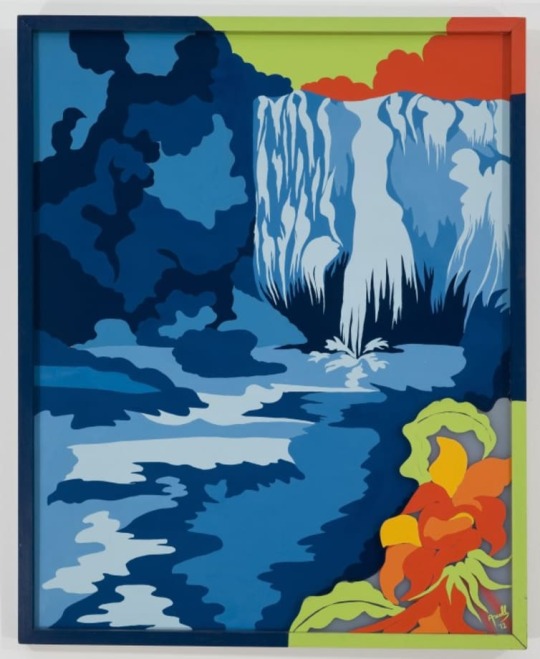
Axell's life was tragically cut short in a fatal accident outside of Ghent, Belgium, in September 1972. However, her legacy lives on, and her final piece, "L’herbe folle," is a testament to her creative brilliance. Axell's art continues to inspire and provoke conversation about social and political issues today.
Credits below:
#artist#artists on tumblr#artistsoninstagram#curatorial#curator#evelyne axell#axell#multimedia#pop art#contemporaryart#abstract art#women#feminist#representation
3 notes
·
View notes
Text
Cos Ahmet
Dismantling of the Body
A Guest speaker from this module that grabbed my attention was Cos Ahmet, as his work is unconventional and esoteric in my opinion his performance art works, perfectly captures what people either adore or despite contemporary art for. Ahmet graduated from John Moore's with a master's in fine art and now has a studio at the Royal Standard, where the artist collaborates with other artists in residency, continually with Garry Finigan. Focusing on his solo work, Ahmet explores materials in all forms from textile work to more metaphorical pieces blurring the boundaries between material and body. In bodies of work such as from the bones to the skin Cos uses the idea of fractures and repairs in pipes as representations of the body- using domestic objects to paraphrase the body as pipe joints are labelled elbow joints the link is evident. It delves into concepts of dismembered and separated parts and the use of domestic and industrial elements. This was inspired by the work of Hans Bellmer who focused on mutilation of dolls and the dismantling of the body throughout the majority of his work, the surrealist portrayals of dolls/ women are unsettling and incomplete.

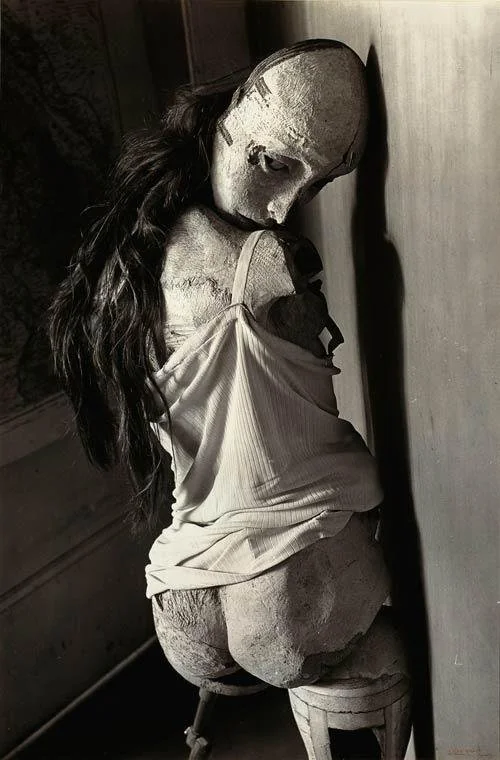
What is it to be a body now?
Ahmet references Keira O’Riley, an Irish post-war artist employing visual, performance and feminist art through the 90’s up to the present. O’Riley ‘speculative reconfigurations of The Body in its most expanded sense, across multiple spaces, scales, and temporalities, often but not always, working with site, duration, and context as generative elements’ (http://www.kiraoreilly.com/statement) . The artist focuses on body politics and is now a crucial figure in biological arts and ecology in Helsinki. In response to the question she posed; what is it to be a body now? Ahmet created The Presence of Relics (2020) and To Disperse Is To Cause (2020) which inspired by O’Riley, using clear tape and film to create a phantom impression of itself and the concept of shedding his own skin. The Presence of Relics consists of the body and the box becoming one, as Ahmet shows bodies disappearing, morphing into a type of mass.
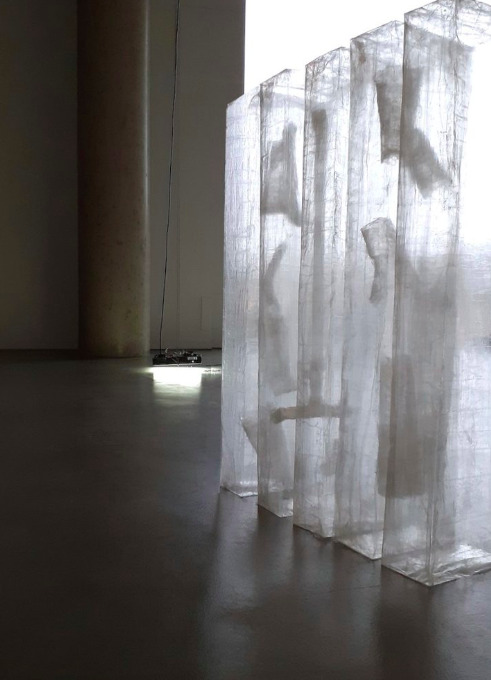
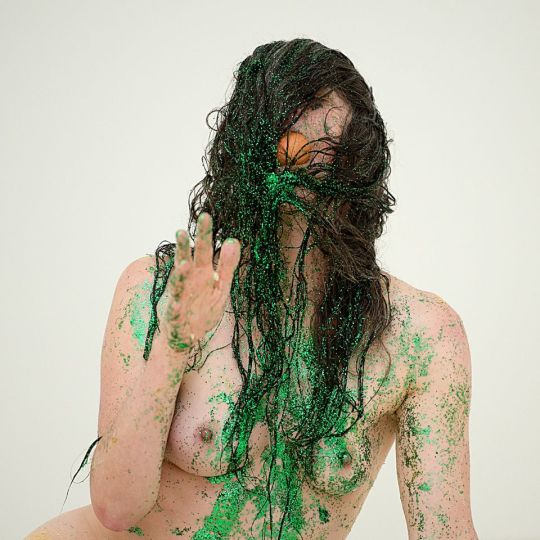
Acknowledging the Choreographic Object
The artist is well informed by art history, with the readings of Erin Manning and the works of William Forsythe, Alan Kaprow and Franz Erhad Walther shaping his art. Franz’s performance pieces from the 60’s were conceptual, with participation of people covered/ wearing a fabric, stretching miles between the people. This is referenced in Ahmet’s Sensing the Inbetween (2020) with the same name as Walther’s. Ahmet created the piece in a different material, replacing the fabric with clear film and box’s that performers were shrouded in. Within the context of social differences, Ahmet’s rendition is indicative of Covid as the two are stood socially distanced and in their respective bubbles. The artist also informed a separate piece of Ahmet's collection; as he was prompted to make an object he could disappear into. Cos achieved this through using the material of a survival blanket, in Curious Being (2021) he created a performance piece on Crosby beach during the first lockdown of Covid-19, adding an extra layer to the blanket for structure Ahmet was inside the object in order to ask the question when does the body stop being a body and become material?

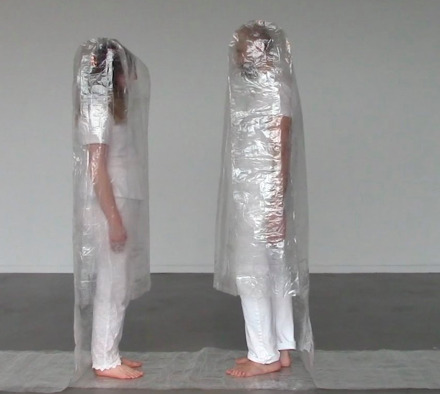

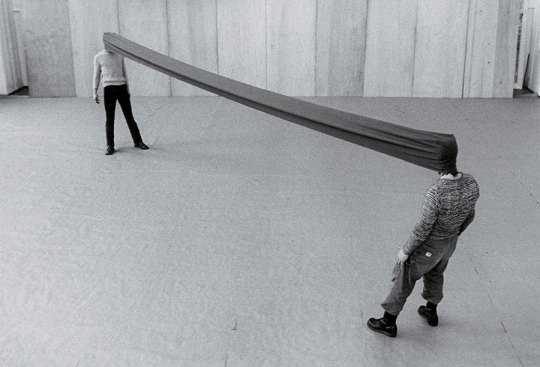
Mannings ideology of ‘Choreography happens everywhere, all the time’
Ahmet follows artists such as O’Riley by exploring the naked body in performance and video, as seen in the exhibition of Proposition (2022) at gallery Dodo in Brighton. The piece includes a nude man with translucent plastic or film over his face, while holding a clear box over his genitals. The artist intends to depict how a body interacts with unfamiliar objects, disappearing into and becoming a material. I see this as why Ahmet works with transparency, as it adds a juxtaposition of hiding the performer while being completely visible.

Ahmet continues to divulge in merging material and body through Your Normal Surface Is Not Available where he covers himself in foil to immerse himself into the background of a survival blanket gradually. The video capturing the process of his face being covered increasingly, eventually hiding his eyes, then ends with the model beginning to take the mask off, although the audience does not see his entire face. This is done through performance in a video edited giving his face transparency, adding a factor of fantasy, and almost creating a liminal space within the video, with a soundtrack of eerie music composed by fellow artist Gary. Ahmet hails his inspiration from Bruce Nauman’s Art of Make-Up Series (1967-68).Nauman is an American artist who in this video is stood topless, applying white paint to himself until completely covered, the ritual is repeated with pink, green and black makeup displayed through four screens at once.
0 notes
Text
Lindsey Mendick
Where The Bodies Are Buried
Lindsey Mendick’s solo exhibition transformed The Weston Gallery, taking the form of a multi-media installation that investigates dreams, Gothic stories, television and cultural experiences from the 1990s. Bringing the artist's recurring anxiety dream to life, Where The Bodies Are Buried took the form of a decaying house with dark secrets beneath the floorboards.
Works included ceramics and stained glass emerging from the floor as hands, feet and limbs, with a film playing across several screens creating a chorus for simultaneous viewing. Anxiety dreams have long inspired artists and writers, ranging from Eve’s prophetic dream about eating the forbidden fruit in Paradise Lost, to Surrealist paintings and sculpture depicting hauntings and dream-states. The phrase ‘where the bodies are buried’ means to possess information or secrets about a person or organisation. In Mendick’s installation, the secrets are both literal and metaphorical, the buried bodies signifying her fear of being ‘found out’ and misdeeds of the past being unearthed.
Mendick creates worlds layered with personal anecdotes, timeless myths and popular culture references. She works predominantly with clay – a material that has historically been associated with decoration and the domestic sphere. She acknowledges and subverts these associations, creating intricate works that explore the roles and experiences of women in society. Dark comedy permeates Mendick’s practice, and her confessional approach knowingly combines crushing self-doubt with sensational honesty. Her installations draw on the artist’s own stories and memories, with humorous, grotesque and beautiful results.
The installation referenced the popular 1990s UK soap opera Brookside, in which abusive husband and father Trevor Jordache was stabbed to death by his wife Mandy in 1993. Mandy buried his body under the patio, assisted by their daughter Beth who was played by Anna Friel. In a storyline watched and discussed by millions, the body was eventually discovered in 1995 and Mandy and Beth were charged and imprisoned. Mendick reflects on this plot-line and the simultaneous, communal television viewing and shared cultural experience of 1990s soaps. Her work mirrors the tensions, crescendo and drama of years-long narratives, in contrast to contemporary on-demand viewing culture. Mendick also draws on Edgar Allan Poe’s 1843 short story The Tell-Tale Heart in which a murderer is plagued by the sound of a heartbeat. He assumes it is that of his victim buried below the floorboards, but the sound is likely the narrator’s own heart betraying him. The story is a powerful reflection on paranoia and guilt, driven by the pounding heartbeat as a rhythmic compulsion to confess.
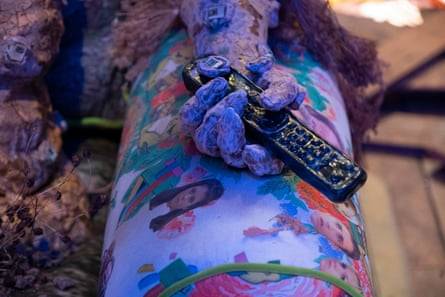

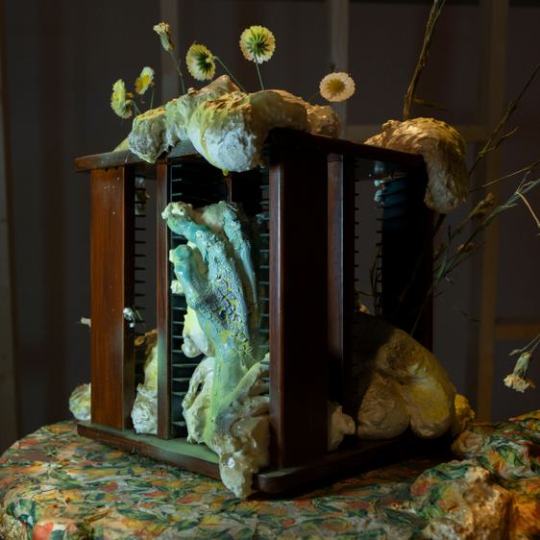
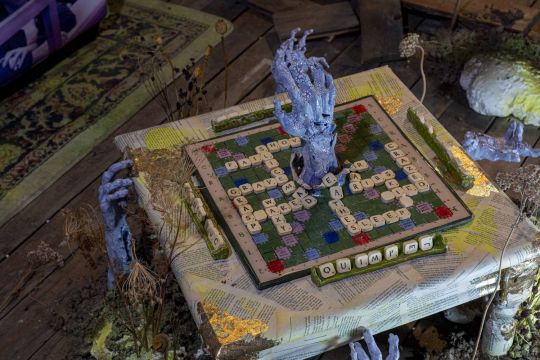
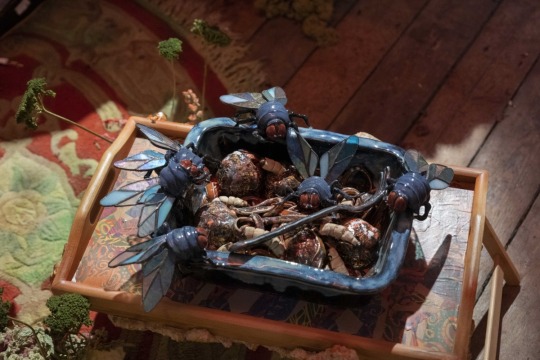
1 note
·
View note
Text
Annette Messager
Dancing th line between playful and macabre
"For me, the
fantastic
is in daily life;
real life is more extraordinary than all
of the imagination" - Annette Messager
"Messager’s artworks are typically modest in their choice of materials and assembled from an accumulation of parts, with objects and imagery juxtaposed alongside inscribed words or portions of text. Items of clothing, badges, children’s stuffed toys, unravelled sweater yarn and synthetic hair have all featured prominently, inviting instant recognition while unsettling the gaze through their sometimes shocking reconfigurations. Images are culled from popular magazines and newspapers, drawn by hand or photographed, while particular words are repeated over and over, like a litany, emptying them of meaning".
Interest in Outsider Art - the beginner artists, children, the insane
"Of equal significance are the historically marginalised practices, materials and techniques of women artists, which she has foregrounded in her practice since the early 1970s through the present day".
"Messager emphasises Art Brut’s use of common materials in relation to her own embrace of the everyday; and the idea that outsider artists were “infirm yet open-minded”: often able to see extraordinary details that others might overlook. She comments, “They are also timeless, the drawings of mad people, like the drawings of children,” admiring the unique “interior vision” and drama within their work. The Surrealists were also significant for Messager, with their dream-like inversions of reality and irreverent combination of disparate objects and images. Whilst other artists of her generation celebrated the anti-art provocations of Dada, overlooking the Surrealist legacy, Messager instead imbued her own creations with aspects of the uncanny and the surreal. Folk tales and mythology are another ongoing source of inspiration, lending a somewhat Gothic edge to her creations that hover between the playful and the macabre".
"Hope, faith, doubt and tenderness form the emotional tissue connecting Messager’s diverse body of work. Despite their playful appearance and whimsical tone, they reveal a genuine, at times dark exploration of what it means to be human – to love and to experience pain."
Use of multiples, repetition, and fragmentation
"Messager writes that her early interest in the “devalued arts” stemmed from her being a woman artist and thus a “devalued artist, a minority artist”. “I was intent on highlighting this fact in my work,” she states. “So, I sought out devalued territory and worked to draw attention to it, particularly women’s territory, which was thought of as obscure and repressed. Hence my predilection for popular art, proverbs, photography, fairy tales, and Art Brut.” Noting that she “had no title”, Messager invented one for herself: “That way, I became someone important, someone with a defined character.” Her identity was thus established through an array of personalities: not only ‘artist’ and ‘collector’, but eventually ‘practical woman’, ‘trickster’ and even ‘peddler’, hawking her incendiary ideas about art and identity in the public sphere".
"Messager’s Album-collections of the 1970s broke new ground, introducing an abiding interest in the roles and representation of women in contemporary French society. Not intended as a direct portrait, they nevertheless often figured the artist hidden somewhere in their vast image banks of faces and bodies; and they drew considerable energy from her experience as a young unmarried woman trying to establish an art career in a man’s world. Reflecting on this period Messager recalls that she was frequently asked if she wanted to have children, a question that a man (or male artist) would never have been asked. In response, she says: “I tried to find the identity of woman, but by medium. I looked everywhere – newspapers, magazines – and all the collections came from this, including my proverbs. It was about young women in the 1970s, like a diary but not of me directly.”


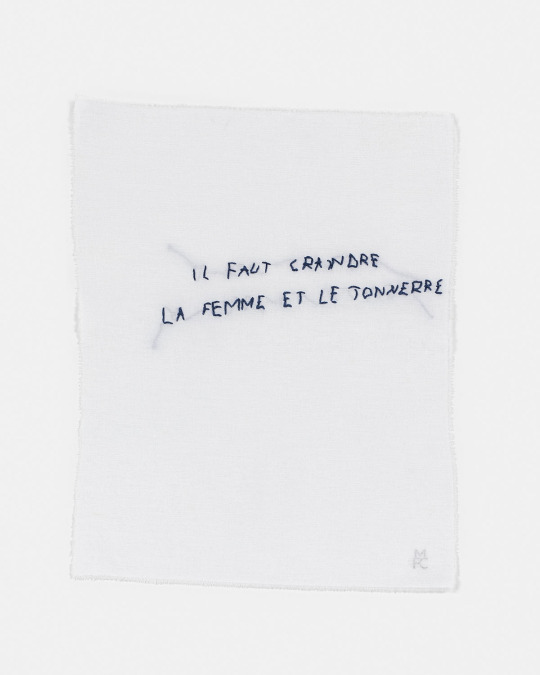
Ma Collection de Proverbes, 2012
chrome-extension://efaidnbmnnnibpcajpcglclefindmkaj/https://www.moma.org/documents/moma_catalogue_471_300063148.pdf
(MOMA catalogue)
play with language
crude embroideries that spell out traditional french sayings
done on napkins that typically appear in ashtrays , wine pots, coffee mugs.
"All are derogatory, jokey aphorisms and colloquialisms about women: "If woman were good, God would have had one"; "Women are taught by nature, men by books"; "Three girls and their mother, four demons for their father"; "The eye of a woman is a spider's web." Messager saw these proverbs as interdictions that control and even forbid certain behaviors of women. Her strategy was not to replace one aggressive language with another, but to substitute in place of an authoritarian mode of discourse a less proscriptive one. Again, by rearticulating these anti-female messages in a feminine medium, she wrestled them from the original context and dislodged the original intention".
0 notes
Text
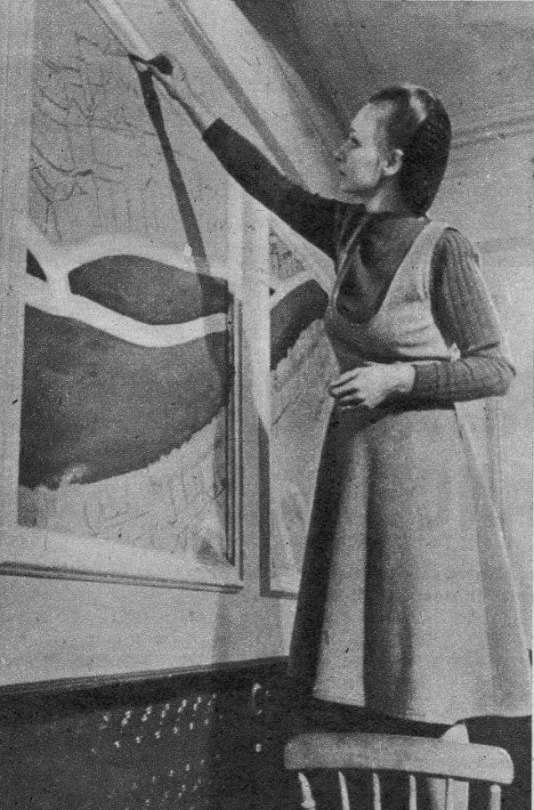
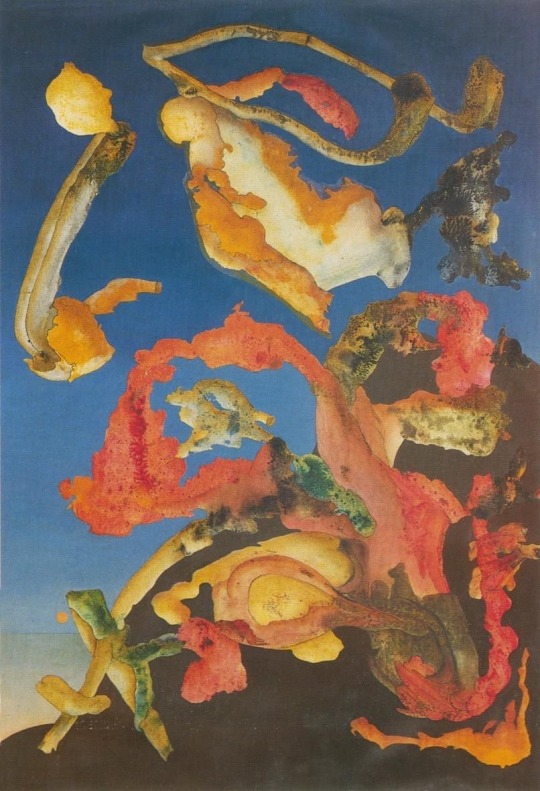

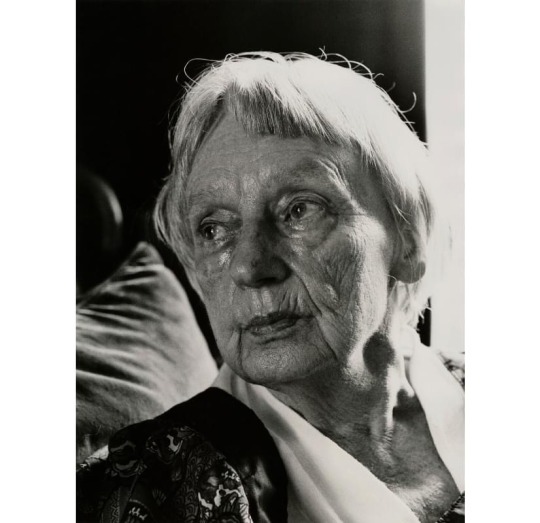
Ithell Colquhoun (9 October 1906 – 11 April 1988) was a British painter, occultist, poet and author. Stylistically her artwork was affiliated with surrealism. In the late 1930s, Colquhoun was part of the British Surrealist Group before being expelled because she refused to renounce her association with occult groups.
Colquhoun was born in Shillong, Eastern Bengal and Assam, British India, but brought up in the United Kingdom. After studying at the Slade School of Art, she lived briefly in Paris before moving back to London. She spent the latter part of her life in Cornwall, where she died in 1988.
She used a wide range of materials and methods, such as decalcomania, fumage, frottage and collage. Colquhoun went further, developing new techniques such as superautomatism, stillomanay, parsemage, and entoptic graphomania writing about them in her article The mantic stain. via Wikipedia
______________
this post is inspired by book #artcatalogue: Angels of Anarchy: Women Artists and Surrealism by Patricia Allmer (Editor)
______________
read also and photo source: The Artist Who Embraced the Occult and Defied the Surrealists
https://www.artsy.net/article/artsy-editorial-artist-embraced-occult-defied-surrealists
Ithell Colquhoun, Untitled. © Tate. Courtesy of the Tate.
Ithell Colquhoun, Untitled 2. © Tate. Courtesy of the Tate.
Ithell Colquhoun portrait by Alastair Thain, 1985
.
.
.
#IthellColquhoun #Ithell #Colquhoun #femalesurrealists #surrealism #femalepainters #womensart #artbywomen #BritishArtists #BritishFemaleArtists #femalemystics
1 note
·
View note
Text
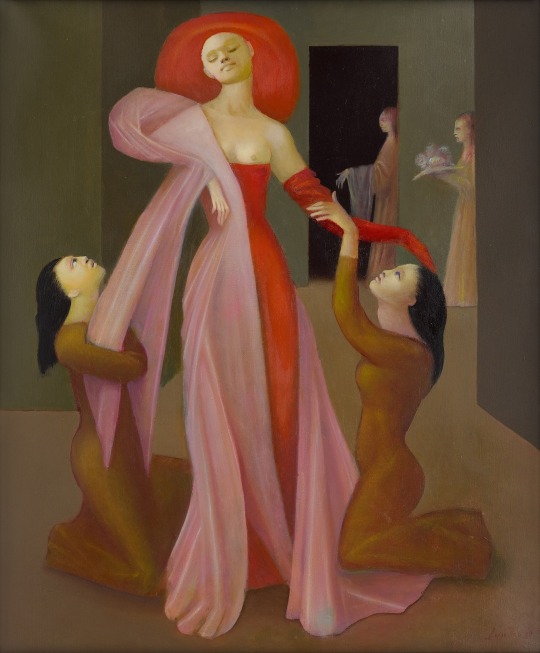
Leonor Fini (Argentine painter) 1907 - 1996
L'Essayage IV, 1985
oil on canvas
73 x 60 cm. (28.75 x 23.63 in.)
© photo Sotheby's
Catalogue Note Sotheby's
"Putting on costumes, getting dressed up is an act of creativity ... It’s about inventing one’s self, being transformed, being so apparently changing and multiple that one can feel it from within one’s self." - LEONOR FINI
L’Essayage IV, painted in 1985, is an iconic and provocative statement by Leonor Fini; an act in which she expresses her highly original vision, powerful self-expression and fierce independence. Her protagonist defies normative roles — both of traditional society and of the artistic movements Fini is associated with.
Leonor Fini (1907–1996) was an Argentinian surrealist painter, designer, illustrator, and author, known for her depictions of powerful women.
Born in Buenos Aires, Argentina, she was raised in Trieste, Italy, her mother's home city. Custody battles often involved Fini and her mother in sudden flights and disguises. She moved to Milan at the age of 17, and then to Paris, in either 1931 or 1932. There, she became acquainted with Carlo Carrà and Giorgio de Chirico, who inspired much of her work. She also came to know Paul Éluard, Max Ernst, Georges Bataille, Henri Cartier-Bresson, Picasso, André Pieyre de Mandiargues, and Salvador Dalí.
13 notes
·
View notes
Text
Studio Project 2: Self-Directed Research
Artist Research
Francesco Clemente
Often classified as a Neo-Expressionist, Francesco Clemente makes rich gouache paintings and pastel drawings that range from distorted portraits to dreamlike scenes of violence and eroticism. Throughout his strange figurations, Clemente depicts corporeal details such as mutilated limbs, floating eyes, and intertwined bodies with a surrealistic detachment and sense of sublime symbology: Clemente, who splits his time between New York and Varanasi, India, is particularly inspired by Indian mysticism, art, and culture. The artist has exhibited in New York, Milan, Rome, London, Amsterdam, Madrid, and Zürich. Clemente’s work has sold for up to six figures on the secondary market and belongs in the collections of the Art Institute of Chicago, the Centre Pompidou, the Guggenheim Museum, the Metropolitan Museum of Art, the Museum of Modern Art, the Rubell Museum, the Stedelijk Museum, and the Tate.
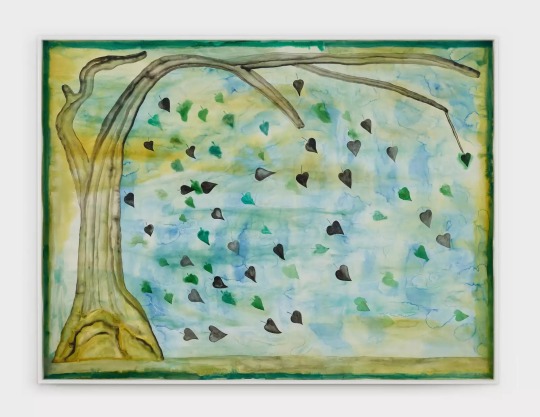
Air, 2021
Watercolor on paper
60 × 80 in | 152.4 × 203.2 cm
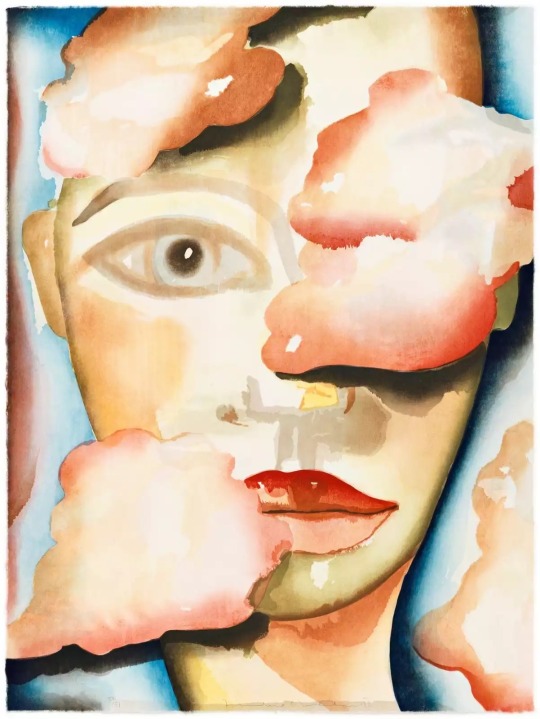
Air, 2007
Twenty-seven color Ukiyo-e woodcut hand-printed from 21 woodblocks
24 × 18 in | 61 × 45.7 cm
Edition 1/51
Inka Essenhigh
Inka Essenhigh (b. 1969, Bellefonte, PA) received her Master of Fine Arts from School of Visual Arts, New York, NY and her Bachelor of Fine Arts from Columbus College of Art & Design, Columbus, OH.

Inka Essenhigh, "Bleeding Hearts" (2021), Enamel on semi-rigid canvas, 121.9 x 96.5 cm, 48 x 38 in
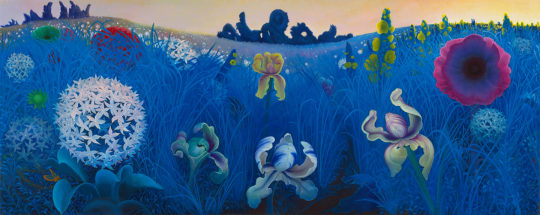
Inka Essenhigh, Blue Field, 2021
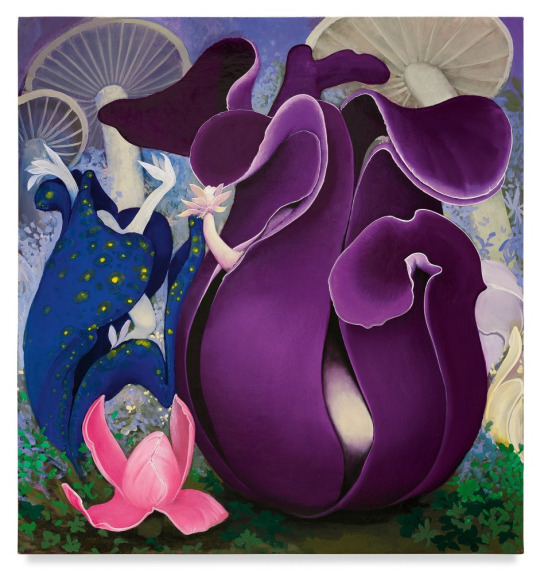
Inka Essenhigh, Purple Pods, 2019, Enamel on canvas, 34 x 32 inches
She paints a fluid, dreamy, fantasy landscape of animated, human-like trees and biomorphic beings – almost always women – veering towards a narrative art.
Chris Ofili
Introduction Christopher Ofili, (born 10 October 1968) is a British painter who is best known for his paintings incorporating elephant dung. He was Turner Prize-winner and one of the Young British Artists. Since 2005, Ofili has been living and working in Trinidad and Tobago, where he currently resides in the city of Port of Spain. He also has lived and worked in London and Brooklyn. Ofili has utilized resin, beads, oil paint, glitter, lumps of elephant dung and cut-outs from pornographic magazines as painting elements. His work has been classified as "punk art." WikidataQ1077608

Chris Ofili, The Great Beauty, 2020-2023, oil and charcoal on linen, 200 x 310 cm, 78 3:4 x 122 in © Chris Ofili. Courtesy the artist and Victoria Miro
"The Seven Deadly Sins are paintings in constant transition: between surface and depth, figure and foliage, light and dark; between mythology and religion, the sacred and profane."
"Nicholas Serota, who recently retired from his twenty-nine-year reign at the Tate, told me that Doig’s paintings “have a kind of mythic quality that’s both ancient and very, very modern. They seem to capture a contemporary sense of anxiety and melancholy and uncertainty. Lately, he’s gone more toward the sort of darkness we associate with Goya.”
"Ornamentation and visual excess have always featured in Ofili’s art"

Almost medieval … Chris Ofili, Requiem, 2023 (detail) commissioned for Tate Britain’s north staircase. Photograph: Thierry Bal/© Chris Ofili. Courtesy the artist
Emily Eleveth
Emily Eveleth is widely known for her paintings of jelly doughnuts. In fact, The Boston Globe wrote about this fascination in a 2008 article called “It’s time to paint the doughnuts.” She has had over 20 solo shows in museums and galleries on the East Coast, and received masters’ degrees from Smith College and the Massachusetts College of Art.
Spanning the boundaries between portrait, landscape, and object of projected desire, Emily Eveleth’s paintings form a genre unto themselves. Her ongoing series of paintings of doughnuts invests this unlikely subject with unexpected presence and identity. "Eveleth's paintings restlessly shift across a spectrum of meanings, covering along the way all the distances between opposing significances; prosaic and profound, profane and sacred, banal and intriguing, to say nothing of the axis between cool asexuality and gushing, if veiled, sexuality." *
In her concurrent series of figurative images lone figures stand in enigmatic isolation. Lost in private worlds the figures "seem to invite the viewer's gaze, acknowledge it, and then absorb it, folding it into their own particular dramas." ** These figurative projections of doubt and uncertainty appear paradoxical to their central declarative placement and openness. The dramatic lighting's interdependence on the rich enveloping darkness allows the figures to simultaneously emerge from and be enveloped by the inky space, projecting a quiet vulnerability.
Rashid Johnson
My works for the self-directed project depict a series of nightmares stemming from pain, anxiety, trauma, and several other mental health disorders. With the use of Vanitas Symbolism – the kind of painting that was popularised in the 17th century, often featuring still-life arrangements, including fruits, flowers, and other objects as symbols of the transience of life and the inevitability of death, I incorporate symbols of decay, such as wilting flowers or rotting fruits to convey the idea that even the most beautiful and vibrant aspects of life are subject to decay and eventual demise, suggesting a connection to human anguish and the fragility of existence. Moreover, I place decaying or withering fruits or flowers alongside depictions of human suffering or anguish to create a parallel between the ephemeral beauty of nature and the transient nature of human existence. The alignment between the fragile blooms and the sombre or distressed subject matter can evoke feelings of sorrow, mortality, or the fleeting nature of happiness. Plus, fruits and flowers are used metaphorically to represent human emotions and experiences. The work depicting a wilting flower or a bruised fruit symbolises a person's fading or wounded spirit undergoing emotional distress or pain. Similarly, an arrangement of fruits cut open or damaged serves as a metaphor for a human subject's inner turmoil or vulnerability. In terms of the colour palette, the one chosen for the fruits and flowers in a painting contributes to the depiction of human anguish. Dark, muted, or desaturated colours are used to represent sadness, despair, or suffering, while various parts are depicted with sharp contrasts between vibrant and sombre hues can create a sense of tension or conflict.
Georgia O'Keeffe: Known for her large-scale close-up floral paintings, Georgia O'Keeffe often explored the sensual and symbolic qualities of flowers. While her works are not explicitly focused on human suffering, they often evoke a sense of introspection, vulnerability, and emotional depth. Her magnified flower paintings, such as "Black Iris" or "Calla Lily Series," can be interpreted as metaphors for the human experience, including anguish and desire.

Mind Vomit
‘This represents the daily conversation within my mind. Anxious thoughts, depressive thoughts, sub-thoughts, thoughts about the thoughts, a constant critical commentary and a tornado of darkness, numbness and complete inner turmoil.’
Goya’s disasters of War
Jake & Dinos Chapman
destroyed bodies | Otto Dix
George Grosz
0 notes
Text

4Me4You Features - “Powerful, despite it all”.
4me4you visits JD Malat Gallery which featured Sophie-Yen Bretez - “Powerful, despite it all”.
Thought-provoking and relatable Bretez presents a personal narrative on femininity. Inspiring hope and healing through vibrant surrealist compositions she poses questions on self-expression and the social conformities imposed on women.
“Powerful, despite it all” - invites viewers to embark on a kaleidoscopic journey reflecting on themes of memory, pain, and resilience through the lens of universal femininity.
ARTIST: Sophie-Yen Bretez
0 notes
Text
Amanda Charchian
Amanda Charchian (b.Los Angeles) creates work with a feminine sensuality that is simultaneously epic and intimate. Amanda earned a BFA from Otis College of Art and Design in 2010 with a focus on painting and sculpture. Her current practice is focused exclusively on photography.
An exhibition of 2015’s “Pheromone Hotbox” at Stephen Kasher Gallery in NYC evolved into the artist’s first fine art monograph on Hat&Beard Press/Dilettante Paper with the same name. Comprised of images shot between 2012-2015, the book features 27 female artists nude in dramatic locations across the globe, including in Iceland, France, Costa Rica, Morocco, Israel, and Cuba.
In 2018 she exhibited a new body of work at Fahey/Klein Gallery entitled "7 Types of Love" which presents mediations on the seven categories of love as described by Canadian psychologist John Allen Lee based on Greek ideas. Her photographs create visual narratives on romantic, spiritual and dutiful love through a feminine lens.
Charchian’s most recent works entitled MONO, exhibited with Huxley-Parlour gallery at Photo London 2018, combines her background in painting with contemporary nude studies in black and white. A second monograph and solo exhibition will present these works in 2022.
She is represented by Fahey/Klein Gallery in Los Angeles.
Commercial Clients include: Gucci, Bulgari, Chloe, Lancaster, Cartier, Porsche, Versace, Balmain, Nordstrom, Glossier, Sony Music, Vivienne Westwood, Atlantic and Universal Records.
Publications include: Vogue UK, Vogue Italia, Garage, i-D, Purple, Numero, and So It Goes.
Amanda lives and works between Los Angeles and Paris.




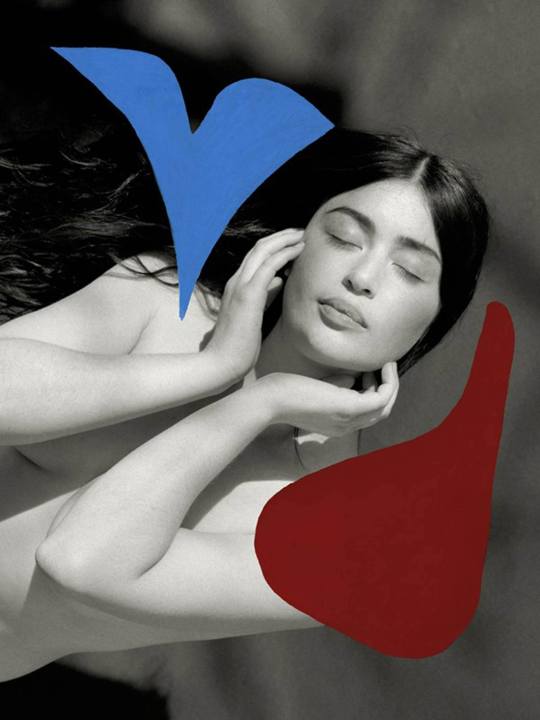
In the contemporary art world, the cultural perspective of the male gaze is consistently challenged in many different and interesting ways. Los Angeles-based photographer Amanda Charchian is an artist doing just that—her new series, titled ‘Mono’, is part of a new collection that celebrates the female gaze: art created by women, for women.
Charchian’s ‘Mono’ is part of Huxley-Parlour’s ‘The Female Lens: 9 Contemporary Female Photographers’ at the Photo London 2018 art fair. The body of work explores Charchian’s relationship to female intimacy through the use of multiple art forms, shadows, and color.
Working within the established trope of nude photography, Charchian creates almost surrealist images that confront the concept of the gaze, whilst informing our sense of abstraction through her use of geometric shapes. Cast against architectural spaces, Charchian’s black and white images are then painted on in primary colors, a technique that is attributed to her artistic inspiration, conceptual artist John Baldessari. “For me, color, texture and form are always the essential elements in art,” Charchian recently told AnOther Magazine. “How do you make something graphic feel sensual? I think everything I’ve ever made has been about intimacy”.
#art research#photography#artist research#research#art photographer#female gaze#self portrait#Amanda Charchian#woman photographer#artist from girl on girl book
1 note
·
View note